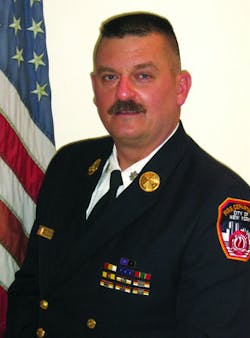“Spring cleaning” may seem like a funny title for a fire magazine column, but it is not. I have written before about the annual inspection process that every FDNY company goes through each year and the benefits of this activity. Let’s look at a simple “spring cleaning” routine that every company or firehouse could benefit from.
Let me start by explaining that this process is not just about cleaning. It’s about operations, it’s about equipment, it’s about safety and much more. I’ve said it many times in the programs I deliver around the country: “A clean and squared-away firehouse and apparatus is a solid indication of a squared-away unit and firefighters.” I’m not saying every firehouse has to look like a museum, but being clean, uncluttered and organized is a must.
Seasonal upkeep
Winter has faded away, the days are getting warmer and rain rather than snow is a weekly event. Regardless of your regional climate, as winter fades, everyone starts thinking about spring and putting everything in order. If you live up north, you have a lot of equipment that can and should be cleaned and put away. For those of us who deal with snow, the snow shovels, buckets of salt and sand, snow blowers and even plows on some of our vehicles are being put away – but not before cleaning and lubricating them and even painting some parts. Any machines that run on gasoline or a gasoline mix must be run down or have the gas removed. Rusted shovels, plows and other tools can be scrubbed and oiled for storage. This will be appreciated in the fall, when we break out these tools for the next impending winter.
Take a good, hard look at your unit’s apparatus. Winter is hard on our rigs and they need some careful attention now. Every compartment must be emptied. Yes, get everything out of each compartment and thoroughly clean the compartment. If any rust is starting, a quick sanding followed by a light coat of paint will not only improve the looks, but increase the life span of the steel. After cleaning each compartment, examine, clean and maintain each tool and piece of equipment. Any sledge hammer you carry to break ice around hydrants and inlets should be removed and stored or placed back in the compartment with the other tools. Any buckets of salt or sand that are carried for winter traction should be removed.
While you have to tools and equipment out, they should be thoroughly wiped down and cleaned. This means soap, water, brushes, steel wool and spray cleaners. Even older tools can look and operate like new tools if they are maintained properly. Air and fuel filters for motorized equipment must be changed and the gas and or oil may have to be switched to summer grade.
Hand tools with movable parts should be lubricated and worked so they open, close and operate smoothly. Cutting and striking tools need to be sharpened and have sharp edges filed off where necessary. Axes and other tools with cutting blades should be sharpened properly to a keen edge rather than a sharp one.
Empty and clean hose and hosebeds on engines. The hose can be washed and or brushed clean and the hosebeds should be washed and touched up where the paint has been worn or chipped away. The hose needs to be examined closely and each coupling should be uncoupled and reattached. Some departments use this opportunity to test the hose while it is off the rig.
All of the self-contained breathing apparatus (SCBA) should be removed and examined on the workbench – not a quick once-over to ensure all the parts are there, but a close examination of every element of this most vital piece of equipment. Look at all of the gaskets and hoses for cuts and cracks. Just one cut or crack in a rubber or synthetic hose or gasket should result in it being repaired or replaced. Examine every SCBA cylinder for cuts, cracks or signs of impacts that might have damaged the cylinder or the material it is wrapped with. Check the dates of the cylinders to ensure that they are within their useful service life (hydrostatic test date), uncouple any hoses that can be removed and check the threads for cross-threaded conditions or cracks. Bring any questionable condition to the attention of the officer.
All of these items, from the workbench and compartments to the tools and SCBA equipment, are vital elements of the arsenal we use to fight fires, handle emergencies and serve our communities. We rely on them to keep us safe and alive while performing our duties. Get going!
PLEASE USE REVISED BIO FOR FEBRUARY 2015:
JOHN J. SALKA Jr., a Firehouse® contributing editor, is a retired FDNY battalion chief who was commander of the 18th Battalion in the Bronx. Salka has instructed at several FDNY training programs, including the department’s Probationary Firefighters School, Captains Management Program and Battalion Chiefs Command Course. He conducts training programs at national and local conferences and has been recognized for his firefighter survival course “Get Out Alive.” Salka co-authored the FDNY Engine Company Operations manual and wrote the book First In, Last Out – Leadership Lessons From the New York Fire Department. He also operates Fire Command Training, a New York-based fire service training and consulting firm.
Connect with John
Email: [email protected]
Website: firecommandtraining.com
Blog: firehouse.com/blogs/the-fire-scene
pull quote:
This process is not just about cleaning. It’s about operations, it’s about equipment, it’s about safety and much more.






